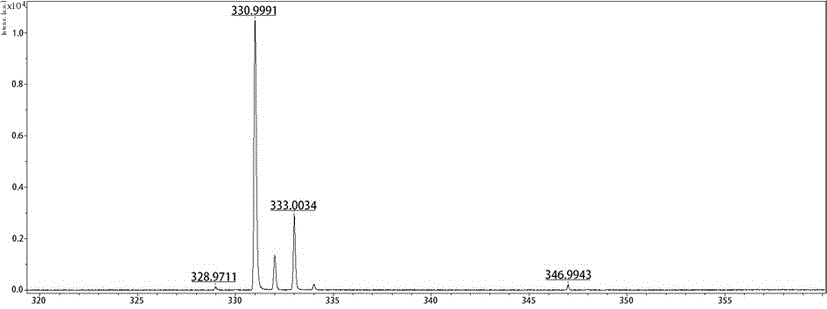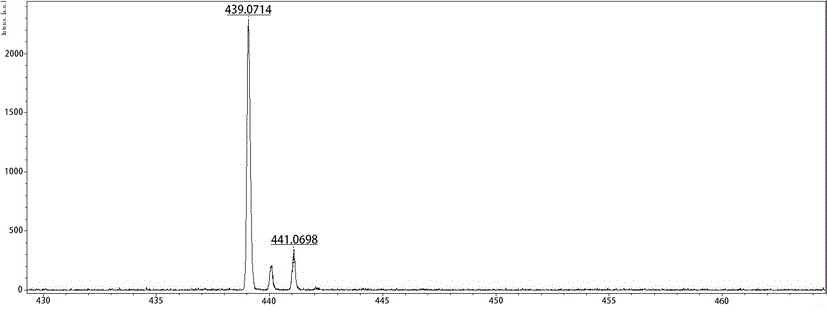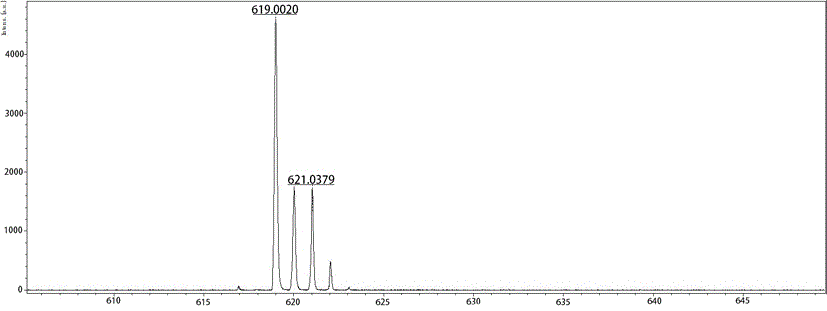Iron-based catalyst, preparation method of iron-based catalyst, and application of iron-based catalyst in isoprene polymerization
A technology of isoprene and polyisoprene, which is applied in the field of preparation of iron-based catalysts, can solve problems such as high cost, catalyst microstructure regulation, and wide molecular weight distribution, and achieve low cost, narrow molecular weight distribution, and high molecular weight Effect
- Summary
- Abstract
- Description
- Claims
- Application Information
AI Technical Summary
Problems solved by technology
Method used
Image
Examples
Embodiment 1
[0036] The present embodiment prepares the pyridine imine iron complex shown in formula (I):
[0037] Under nitrogen atmosphere, add equimolar ratio of adamantyl-substituted pyridinimine ligand and anhydrous FeCl2 into a dry Schlenk tube, then add 10ml CH2Cl2 and stir at room temperature (about 20°C, the same below) for 24 After 1 hour, the product was filtered and washed with 10 ml of n-hexane, washed three times, and vacuum-dried to constant weight to obtain 0.35 g of an orange solid, which is the target product of this example, with a yield of 95%.
[0038] Mass spectrometry: theoretical value: C16H20ClFeN2: 331.0664, measured value: 330.9991[M-Cl]+( figure 1 ).
[0039] Elemental analysis results: theoretical value: C16H20Cl2FeN2: C, 52.35%; H, 5.49%; N, 7.63%; measured value: C, 52.58%; H, 5.34%; N, 7.38%.
[0040] Infrared analysis: IR(KBr) / cm-1:1588, ν(C=N).
Embodiment 2
[0042] The pyridine imine iron complex shown in the formula (II) prepared in this example, wherein R1'=H, R2'=H, the preparation process is as follows: under nitrogen atmosphere, add in a dry Schlenk tube Equimolar ratio of trityl substituted pyridine imine ligand and anhydrous FeCl2, then add 10ml CH2Cl2 and stir at room temperature for 24 hours, the product is filtered and washed with 10ml n-hexane, washed three times, vacuum dried to constant weight, and light pink color is obtained The solid is 0.46g, which is the target product of this example, and the yield is 96%. Mass spectrometry: theoretical value: C25H20ClFeN2: 439.0664, measured value: 439.0714[M-Cl]+( figure 2 ).
[0043] Elemental analysis results: theoretical value: C25H20Cl2FeN2: C, 63.19%; H, 4.24%; N, 5.90%; measured value: C, 62.92%; H, 4.19%; N, 5.72%.
[0044] Infrared analysis: IR(KBr) / cm-1:1587, ν(C=N).
Embodiment 3
[0046] The pyridine imine iron complex shown in the formula (III) prepared in this embodiment, wherein R1"=H, R2"=H, R3"=CH3, the preparation process is as follows:
[0047] Under a nitrogen atmosphere, add an equimolar ratio of 2,6-bis(benzhydryl)-4-methylphenyl substituted pyridinimine ligand and anhydrous FeCl in a dry Schlenk tube, and then Add 10ml CH2Cl2 and stir at room temperature for 24 hours, filter the product and wash with 10ml n-hexane, wash three times, and vacuum-dry to constant weight to obtain 0.61g wine red solid, which is the target product of this example, with a yield of 93%.
[0048] Mass spectrometry: theoretical value: C39H32ClFeN2: 619.1603, measured value: 619.0020[M-Cl]+( image 3 ).
[0049] Elemental analysis results: theoretical value: C39H32Cl2FeN2: C, 71.47%; H, 4.92%; N, 4.27%; measured value: C, 71.98%;
[0050] H, 4.88%; N, 4.18%.
[0051] Infrared analysis: IR(KBr) / cm-1:1593, ν(C=N).
[0052] 2. Polymerization of isoprene
PUM
 Login to View More
Login to View More Abstract
Description
Claims
Application Information
 Login to View More
Login to View More - R&D
- Intellectual Property
- Life Sciences
- Materials
- Tech Scout
- Unparalleled Data Quality
- Higher Quality Content
- 60% Fewer Hallucinations
Browse by: Latest US Patents, China's latest patents, Technical Efficacy Thesaurus, Application Domain, Technology Topic, Popular Technical Reports.
© 2025 PatSnap. All rights reserved.Legal|Privacy policy|Modern Slavery Act Transparency Statement|Sitemap|About US| Contact US: help@patsnap.com



